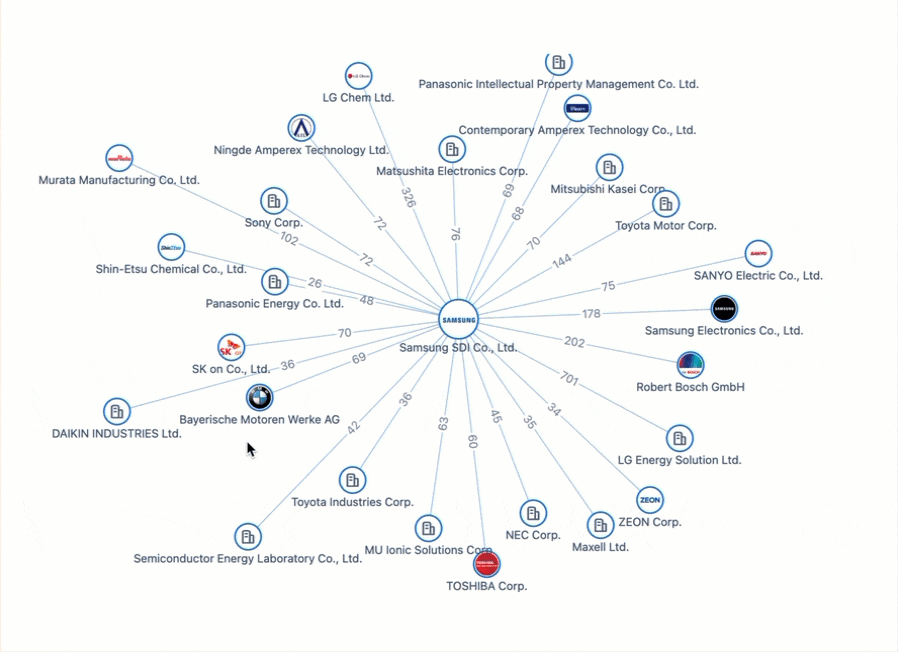Escaping innovation’s ‘valley of death’
Exploring the importance of IP and R&D data in new product development to reduce risks and accelerate time to market
Today’s manufacturers and technology companies are under constant pressure to innovate, as the job of satisfying consumers gets harder. They must also get their ideas to market faster than ever before amid fierce competition and protect their position in the chosen market.
But coming up with a great new product proposal in itself is rarely enough to ensure success. The road from concept to market is littered with obstacles, and many ideas fail to pass beyond the development stage.
In the world of innovation, this phenomenon is often referred to as the “valley of death”, in that only the smartest and best-prepared firms tend to make it through intact. Even then, many will spend years trying to ensure their innovations remain viable as going concerns, and not all will be successful.
From the iPhone to the cordless vacuum cleaner, countless concepts do, of course, end up being turned into successful enterprises. So how did the innovators behind these ideas get it right?
The first thing to remember is that there are several stages to negotiate during the innovation cycle, many of which take inventors out of their natural comfort zones.
Once an idea is conceived, it must be turned into a prototype in order to demonstrate that it works. Designers then test its feasibility—assessing production costs, and outlining the equipment and processes needed for manufacture—before taking it to market.
But at various stages of the commercialization process, teams may have to source funding—often externally—to keep their projects alive, and that requires commercial know-how. Then there are the everyday concerns of running a new business, such as managing cash-flow, human capital and sales and marketing.
Finally, innovators must ensure their intellectual property (IP) rights are protected, and not just at the start of the process but throughout it, as each new version of a product is finessed and finalized.
Perhaps most crucially, innovators must ensure the concepts they develop are genuinely novel and do not infringe on other ideas—although all too often they fail to do so, risking turning the whole endeavour into a costly waste of time with potential legal consequences.
How connected innovation intelligence can help
Arguably, IP is the foundation stone on which all other stages of the innovation process will stand. Naturally, innovation teams are seeking ways to de-risk this piece of the puzzle, and many are tuning to intellectual property and R&D analytics for help.
These solutions help inventors and corporates, along with their legal teams, to monitor the key R&D trends affecting their sectors, manage their patents and, most importantly, secure a competitive edge during the innovation cycle.
Connecting millions of data points from patents, licensing, litigation and company information with non-patent literature can give IP and R&D teams the upper hand when it comes to securing their ideas and getting them to market quicker than ever before.
In a world producing more and more data by the second, connected innovation intelligence is critical to help IP and R&D teams make better strategic decisions and increase the chances of successful innovation and portfolio management. The goal is to be able to see what your competitors are patenting, and where they are deploying their capital. That way you can know where to direct your own investments and resources—and reduce uncertainty.
Securing your partnerships
Those who enter the ‘valley of death’ without connected innovation intelligence to hand run several key risks.
At its most basic, patenting or trademarking an invention helps to stop it being stolen or copied. But protecting one’s IP rights can be a long and expensive process, requiring legal work in multiple jurisdictions with differing rules.
Knowing when to invest in an innovation and when to hold back is therefore vital.
Being fully IP-protected also helps innovation teams secure the assistance they need to bring a product to market.
Innovators may often find commercializing ideas a challenge. But with connected innovation intelligence from IP and R&D analytics, they can reduce the risk that their idea will fail in its early stages by assessing the market place, finding whitespace for innovation, and understanding what the competition is doing.
This could also take the form of access to non-patent literature such as technical resources, corporate investment information, technology trends, or merge and acquisition information. It could be via a strategic joint venture or licensing agreement that lets them access distribution channels or sales networks. It could also involve selling equity to an external investor to access growth capital.
In such scenarios, the innovation team needs to collaborate with the IP teams in order to protect the innovation they come up with and will be sharing their trade secrets with outsiders, so it is vital that any silos between the two teams and bridged and their IP is secured. Being protected will also make it easier for the holder to negotiate favourable terms and conditions and avoid potential future conflicts with partners.
For prospective partners, meanwhile, strong IP rights provide much needed assurance about an idea’s future revenue-generating potential and competitiveness. That in turn helps to give them the confidence they need to invest in your idea.
The clock is ticking
Take the invention of Xerography, or photocopying, in 1937 by Chester Carlson in the US. He patented the idea in 1939 but it took almost eight years to find an investor willing to back it. Finally, the Haloid company—which later became the Xerox Corporation—made the invention commercially available in 1950 and it quickly become a success. Without the existence of that original patent, however, the Haloid may well have never taken the risk.
In today’s competitive world, few companies can afford to wait eight years to take their product to market. The clock is ticking and those who hesitate risk being outpaced by rivals.
In this race, connected innovation intelligence in the form of IP and R&D analytics can help provide innovation teams with the edge they so desperately need. This intelligence can also help them make IP decisions long after a product has been taken to market—helping them monetize and licence assets as well as showing them when their own IP has been infringed.
Overall, IP and R&D analytics help to protect the innovation cycle, which is the motor of any technology-based business. They enable firms to continue creating revenue-generative ideas, in turn ensuring cash is channelled back into R&D in the future.
The quest to develop new ideas is expensive, time consuming and does not always yield results. And company boards, governments and academia will also not invest in R&D unless they feel they can get a return, be it financial or otherwise. If these actors pull back, innovation risks being neglected, ultimately harming companies and the economy, and clearing a path for competitors to steal market share.
Find out more about why IP data is R&D’s new competitive advantage in our latest eBook. Download it here: Why IP data is R&D's new competitive advantage.
Your recommended content
-

Patsnap Surpasses US$100 Million in Annual Recurring Revenue
Category: Article | Category: News/PR
Wednesday, June 12, 2024
Patsnap has reached a significant milestone of achieving $100M in Annual Recurring Revenue (ARR), marking an impressive 20% year-over-year growth in 2023. This milestone highlights the massive and meaningful value our platform brings to over 12,000 IP and R&D teams across 50 countries, driving efficiency, productivity, and collaboration.
-

Introducing Hiro, an AI assistant built for IP and R&D workflows
Category: AI advancements | Category: AI development | Category: AI-tools | Category: Article | Category: artificial intelligence
Tuesday, May 14, 2024
Powered by Patsnap’s industry-specific LLM, Hiro is designed to streamline IP and R&D workflows from ideation to product launch. With its robust AI capabilities, Hiro brings a new level of efficiency, precision, and security to tasks that were once time-consuming and labor-intensive.What sets Hiro apart is that it draws from our large language model that’s been trained on market-leading patent records, academic papers, and proprietary innovation data. This ensures we deliver more accurate and reliable results for every prompt.
-

Powering the Future of Electric Vehicles: The Battle for Battery Innovation and Patents
Category: Article | Category: battery technology | Category: electric vehicle | Category: EV | Category: lithium ion | Category: lithium ion battery | Category: NEV | Category: new energy vehicles
Monday, April 22, 2024
In the ever-evolving landscape of innovation, the electric vehicle (EV) industry stands as a beacon of technological transformation. As we explore the patents propelling the EV revolution, Apple's venture serves as a poignant example of the challenges even industry giants face in this competitive arena. Join us on a journey through the global patent landscape, where the quest for superior power solutions unfolds, and where the true pioneers of the EV revolution are making their mark.